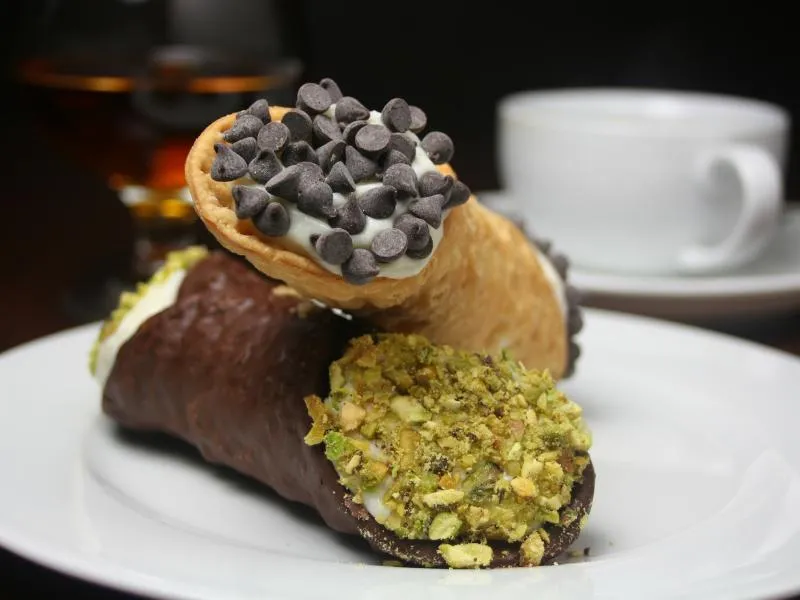Cannoli
Crispy fried pastry tubes filled with sweetened ricotta cheese, often studded with chocolate chips or candied fruit.
👉 View Authentic Recipe 👈
About This Dish
Cannoli originated in Sicily, specifically in the areas of Palermo and Messina, where they were traditionally prepared during Carnival season as a celebratory treat. These iconic Sicilian pastries date back to the Arab domination of the island (9th-11th centuries), with some historians suggesting they were inspired by similar Middle Eastern sweets.
The classic cannoli consists of tube-shaped shells of fried pastry dough made with flour, sugar, butter, and often wine or vinegar to create a slightly tangy flavor. The traditional filling consists of sweetened sheep’s milk ricotta, though cow’s milk ricotta is commonly used today. Authentic cannoli are finished with crushed pistachios, candied citrus peel, or chocolate chips at each end, and may be dusted with powdered sugar.
In Sicilian culture, cannoli symbolize good luck and fertility, which explains their traditional association with celebrations and festivities. While once reserved for special occasions, cannoli have become a year-round staple in Italian pastry shops worldwide, though Sicilians insist that authentic cannoli should only be filled immediately before serving to maintain the critical contrast between the crisp shell and creamy filling.
🧑🍳 Analyzed by CucinaBot
Why This Dish Works
Cannoli showcases the perfect interplay between contrasting textures and complementary flavors. The shell achieves its signature bubbled crispness through the incorporation of wine or vinegar, which creates steam pockets during frying. The filling’s balance of sweet cheese with tangy notes creates depth, while the inclusions of pistachios or chocolate provide textural interest and flavor complexity that prevents palate fatigue.
Key Success Factors
- Proper Dough Resting: Allow at least 1-2 hours for the dough to rest, developing gluten structure for strength while frying
- Oil Temperature: Maintain a consistent 350-375°F (175-190°C) for frying to achieve the characteristic bubbles without burning
- Thorough Draining: Ricotta must be drained for at least 8 hours to prevent a watery filling
- Just-in-Time Filling: Fill shells only moments before serving to maintain textural contrast
Common Pitfalls
Many non-authentic recipes skip the critical step of draining the ricotta, resulting in a filling that’s too loose and quickly soaks the shell. Another common mistake is pre-filling cannoli hours before serving, which inevitably leads to soggy shells. Store-bought ricotta often contains stabilizers that prevent proper draining, making homemade or high-quality artisanal ricotta preferable for authentic results.
How to Judge Authenticity
When reviewing recipes, look for these markers of authenticity:
- Inclusion of wine, marsala, or vinegar in the shell dough
- Instructions to drain the ricotta overnight
- Minimal sugar in the filling (authentic cannoli are not overly sweet)
- Traditional garnishes like pistachios and candied fruit (not just chocolate)
- Clear direction to fill the shells immediately before serving